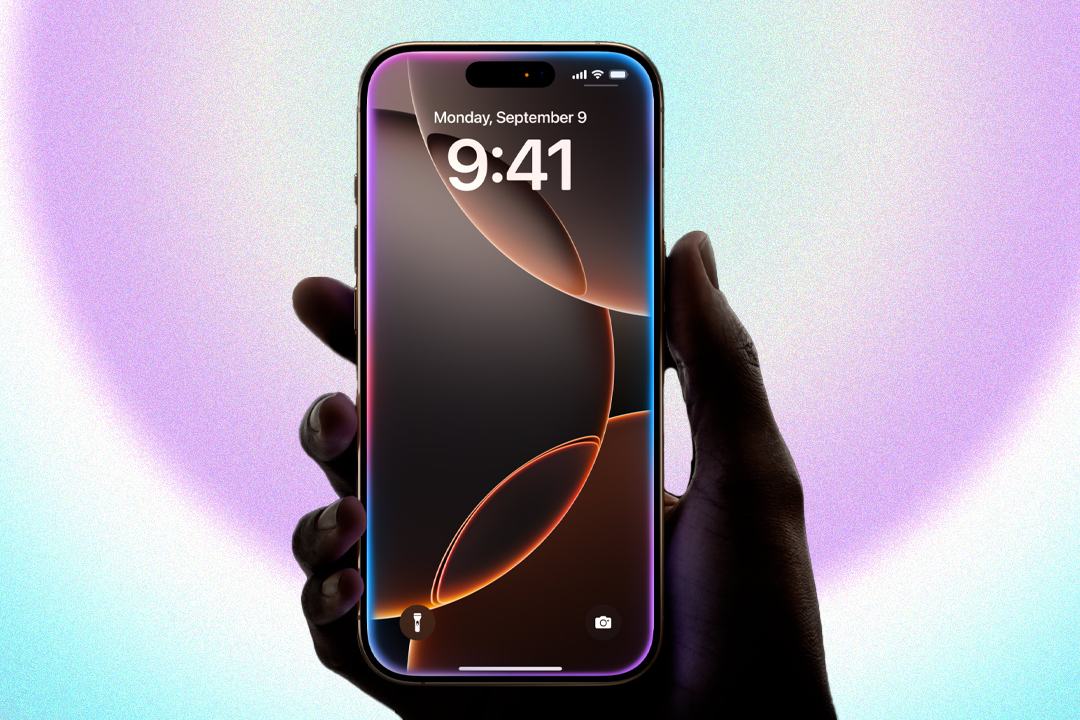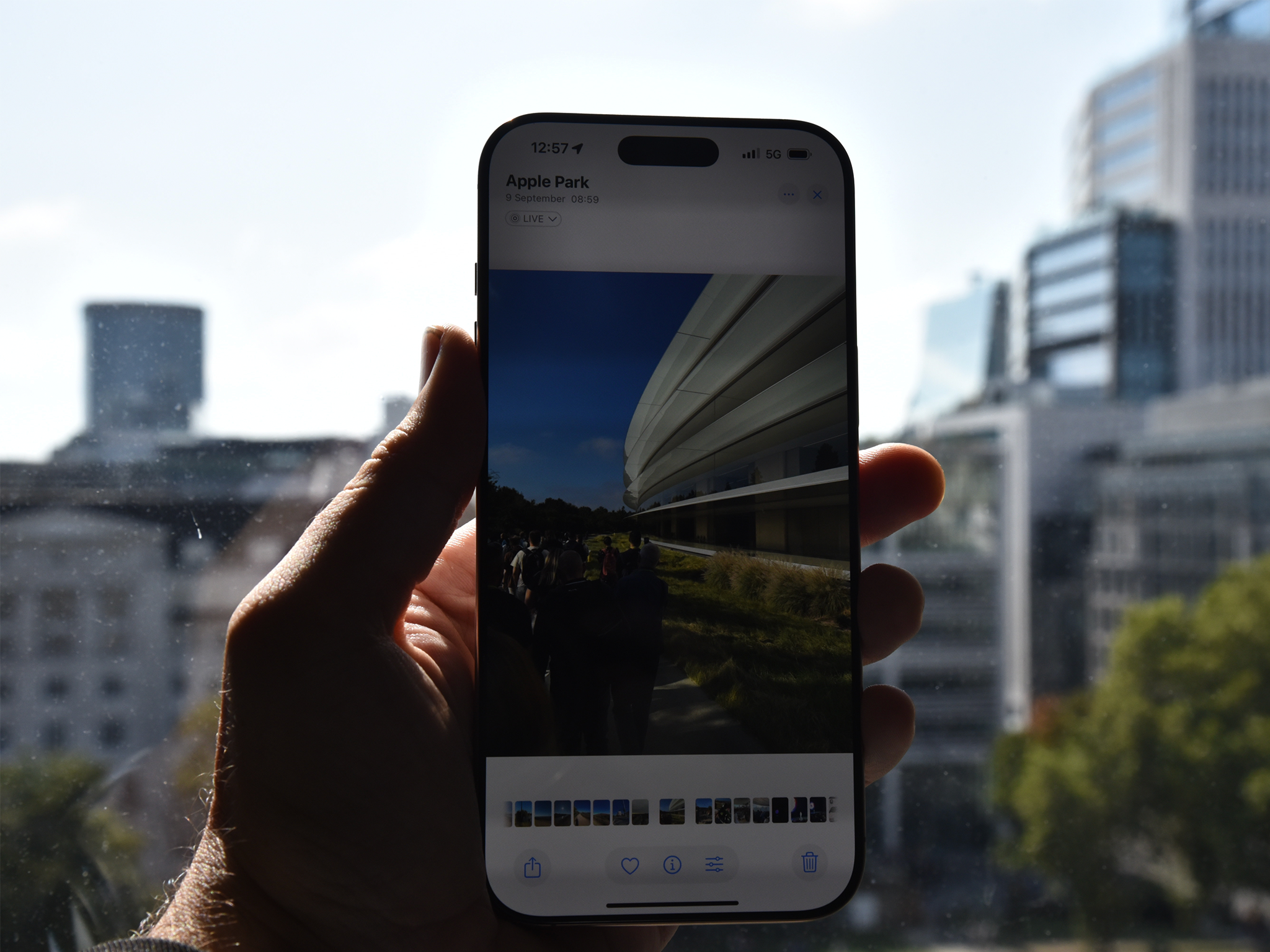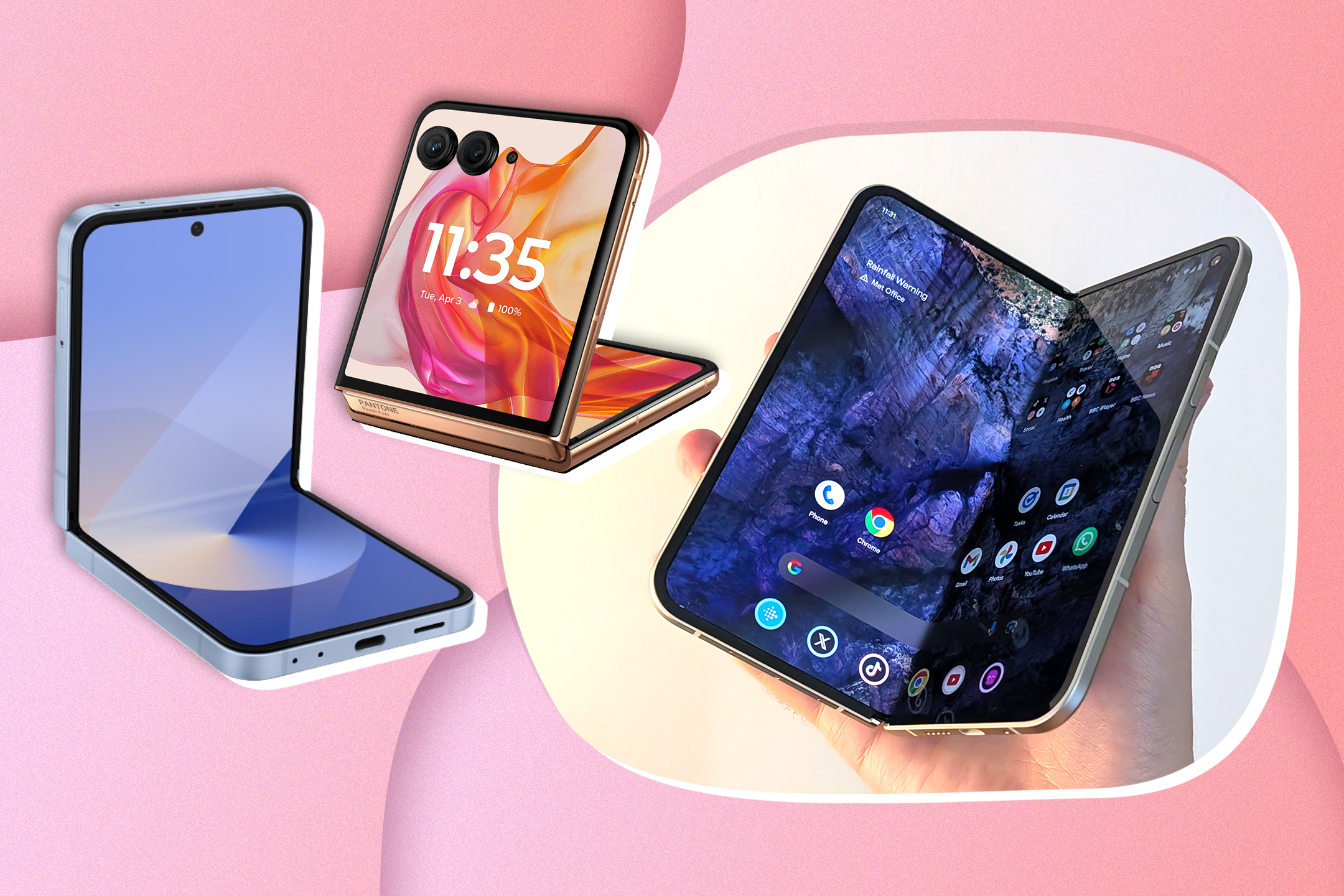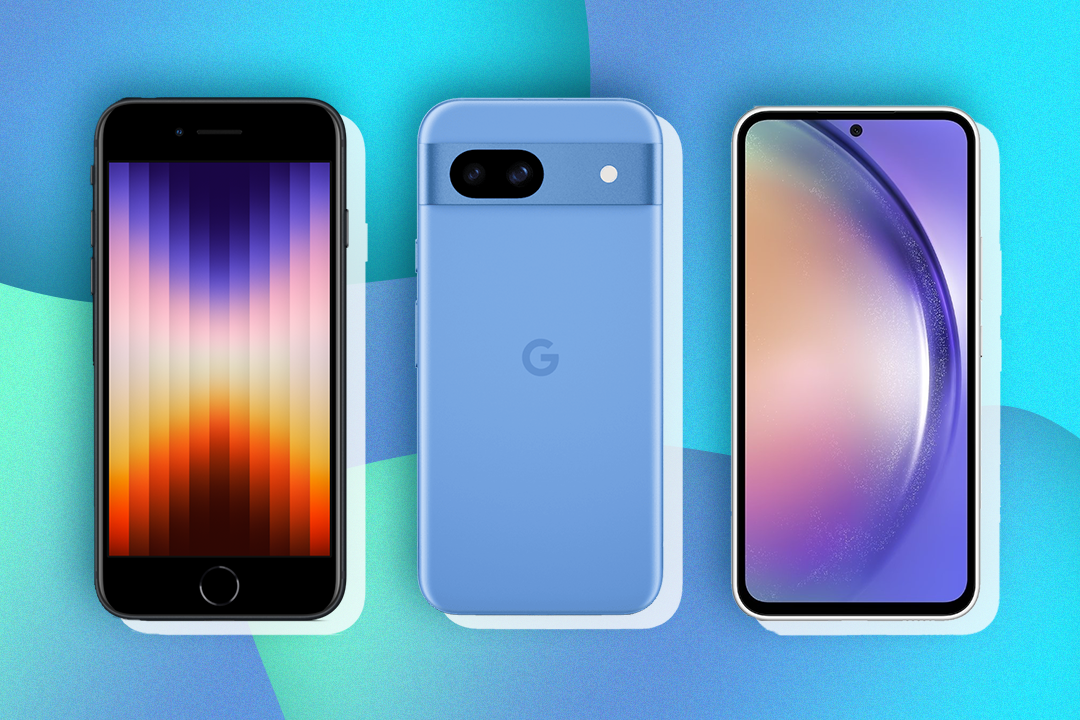The Independent's journalism is supported by our readers. When you purchase through links on our site, we may earn commission. Why trust us?
The iPhone 16 Pro could be revolutionary, but isn’t yet – our tech editor’s full review
It could be transformed by the arrival of Apple Intelligence next month, but until then…

This could soon be the iPhone that changes everything. The iPhone 16 Pro and Pro Max were introduced with much fanfare as the first-ever phones to be built specifically for the upcoming Apple Intelligence, which the company says will make the phone vastly more useful.
For now, though, they are the phones that changed a few things. The iPhone 16 line-up brings evolutionary rather than revolutionary changes, including new buttons, improved cameras and whole new professional photo and video tools, as well as bigger batteries and displays. Taken together, they are a modest set of improvements that are aimed at keeping Apple’s place as the best smartphone available.
Have they done so? I’ve been reviewing this year’s Pro line-up to try and discover how successful this year’s crop of iPhones is, with or without that big upcoming feature.
How I tested

I have lived on the iPhone 16 Pro and 16 Pro Max for almost a week, using it as much as possible for everything from daily work to photography. I put all of the new features to the test: taking pictures with the new camera systems and its button, running its improved chips as hard as possible, and living with the phone. But I was notably unable to test perhaps its biggest feature, which will not actually arrive in any form until next month, weeks after the iPhone has gone on sale.
iPhone 16 Pro and Pro Max

- Display 6.3in (Pro), or 6.9in (Pro Max)
- Processor A18 Pro with 6-core CPU and GPU
- Camera system 48MP main camera, with new 48MP ultra-wide camera
- Battery Up to 33 hours of video on Pro Max
- Colours Black, white, natural and desert titaniums
- Why we love it
- Classic, classy design is easy to hold
- Pro features are really professional
- Photo and video improvements turn it into a creative machine
- Take note
- Base iPhone 16 is a closer challenger than ever
- Its biggest feature isn’t here yet
Design
The iPhone 16’s outer design is almost identical to last year’s iPhone 15. Until you use them, the only things that might give it away are the subtle changes to the size and the camera control that has been newly added to the side, both of which are discussed below.
Both phones have the same flat sides and rounded corners that have marked out the iPhone in recent years, and they use the same display that wraps all the way across the front, except even more this time. They sit neatly and comfortably in the hand – which is useful given that increase in size – and their design and subdued colours give them a formal and classic look that some might call a little dull, but there is always the base iPhone 16 line for a little more fun.
Cameras
The good news is that, even if Apple Intelligence were not happening at all, then this phone would still be a substantial upgrade, especially for anyone coming to the line-up from before the iPhone 14. And most of that is because of the cameras – and the new hardware innovations used to control them.
The most obvious change from the outside is the addition of the camera control. In simple terms, and as the name suggests, that is a button on the side of the phone that you can click to open the camera and then control it. But, as you might expect from Apple, it’s a little more elegant than that.
Pressing it at any time will rapidly bring up the phone’s camera, and pressing it again takes a photo. So far, so simple. But if you double click it, it will open up an array of different camera options, such as zoom and exposure, and you can then move your finger along the button to select and then adjust them.
It makes the iPhone feel something like a real camera, with all the customisation and control that brings. Like a real camera, it requires getting to know it, and even after a few days with the camera control, I’m not yet used to speeding around the options in the way I’d like and expect to be. But there is something thrilling in that: in recent years, the iPhone has done so much for you that using the camera has never felt like a particularly creative endeavour. You can still use it that way if you wish, of course, but the camera control provides new ways to mess around and discover.
Read more: Best Android phones of 2024, reviewed by a tech expert
Apple has also added new ways to be creative with the pictures themselves, in the form of “photographic styles”. This is a selection of different stylistic settings you can quickly call up, which go from lightly adjusting colours and skin tones to opinionated and intense stylistic decisions like recreating the black and white of a high-end camera. Once again, they make the iPhone feel like a real creative machine, and can dramatically alter the look of a picture.
The iPhone had something called photographic styles before, but they were simple and seemed little used; really they’re now something else entirely. Not only have the styles themselves changed, but there are more ways of customising them, and the option to remove them after the fact so that playing with them doesn’t feel so permanent.
The cameras themselves are radically improved in the Pro. Apple made many of the improvements to what it used to straightforwardly call the “main camera”, and now refers to it as the “fusion camera”, but the really exciting changes are in the other two lenses that are on the back of the Pro phones. Until now, they have felt noticeably inferior to their main camera sibling; the kind of thing you use in a pinch, when something is too close or far away.
Now, both have been upgraded such that it is hard to notice when you switch between them. Previously, for instance, when the phone took you into macro mode it felt like some mistake had been made; now it feels mostly on a level with the new cameras, and so you can make your photographic choices without worrying about having sold yourself short.
The camera system is also improved for video, though to such a level that it is hard to imagine it making a huge difference for everyday consumers. Instead, the focus is on professionals.
You can shoot 4K videos in 120 frames per second, for instance; the effect is glorious and cinematic, leading to flowing slow motion, but the videos captured are huge. You get all of the professional features of recent iPhone updates, such as support for Apple’s very high-quality (but again large) ProRes format.
The video changes really come to life with the new audio capabilities. The iPhone 16 Pro has what Apple calls studio quality mics, which really are impressively clear and detailed, and it now captures sound in spatial audio. It will also let you adjust the sound after recording: you can reduce wind noise, but also edit the audio so that it focuses on the sounds of the people who are in the frame, or like the audio has been recorded in a professional studio. Much of Apple’s focus in marketing those features has been showing it as it might be used in actual films, but it is a real breakthrough for casual recorded video; you can really hear people speak even in noisy and unclear environments, and even edit the audio if you want to hear more of them too.
Read more: Google Pixel 9 Pro XL review: Powerful AI features shine
Later this year, Apple says, the camera control button will allow for new “visual intelligence” features, that use the cameras and AI to be able to spot things in images. You can point it at a dog and find out what breed it is, for instance. It sounds great, and the inclusion of a devoted button to get there could encourage widespread use. But as with all of the Apple Intelligence features, I don’t have it yet, and it won’t be a part of the phone if you buy it on release day.
Another question hangs over the future of the camera control: how exactly it will integrate with cases? It is not a straightforward button, since it can also scroll, and so case makers will either need to find a way to make that work or just leave a hole. Apple’s own cases do the former, though it of course had more warning about what was to come.
Chips
The upcoming Apple Intelligence features – and everything else, including many of those new camera features – are powered by the A18 Pro processor. Probably the most important change is that it now has a faster and more powerful “neural engine” for AI work, which should allow the phone to process AI requests more quickly, though that is hard to test until those really useful AI features actually arrive.
Away from that, it also has an array of improvements including a faster GPU for gaming and the fastest CPU. It also has devoted components that allow it to support 4K, 120 frames per second videos and other visual features.
In use, it is snappy and fast, and there is nothing that it seems to struggle with at all. Games do indeed look flushed and filled out in a way they don’t even on the iPhone 15 Pro; Apple has long made promises about console-level gaming on the iPhone, and they might finally be coming true, though whether you can find blockbuster games you want to play on your iPhone screen is another question. Benchmarks showed a definite if modest improvement on last year’s chip, roughly in line with the speed bump between the iPhone 14 and 15.
Apple has also improved the thermal performance of this year’s phones, which should make their processors able to perform a little faster without worrying about heating. Last year’s phones also had a tendency to occasionally become uncomfortably hot to the touch, and I wondered if that might be the reason some people reported unusually high battery degradation on last year’s phones. (My test model is at 88 per cent of its original capacity after a year.)
It must be frustrating for Apple that its dominance in processor design has now become a little expected: it’s a surprise if a new device and its new processor are not stunningly more capable than the previous generation. And just as expected, the iPhone 16 Pro and Pro Max are rapid and powerful.
Battery
The iPhone 16 Pro Max has the biggest battery life that has ever gone into an iPhone, and the iPhone 16 Pro is doing pretty well for itself too. But Apple has been a little cagey about the exact details of how much it has increased the capacity of the new phone.
It has said that there is a huge leap in the battery life of the phone and that both models have up to four hours more playback than their predecessors. But it also said that was not just the result of the new and increased batteries, but also because they work with the extra efficiency of the A18 Pro and power management in iOS 18. That means that it is hard to know from Apple’s information exactly how much of a difference the battery increase might make, especially in other contexts than watching videos.
In use, however, the battery seems to be noticeably slower to drain than the previous iPhone 15 Pro Max. It is hard at this early stage to make direct comparisons – I have only used the phone for a few days, during which it has also been busily downloading and sorting out files – but there is a clear increase compared to a device that already held its charge impressively well.
Any battery problems are also slightly assuaged by the introduction of new MagSafe chargers that can charge more quickly than the previous generation, meaning that it is much easier to top up whenever you need to.
Screens and display size
The displays are slightly larger this time around: the iPhone 16 Pro Max is 6.9in, compared with 6.7in on the previous iPhone 15 Pro Max, for instance. (The non-Pro phones haven’t changed.) The phones themselves haven’t grown quite as much, because Apple was able to reduce the borders that sit around the edge of the display, but the new phone is still around 3mm taller and just under a millimetre wider. An almost identical growth spurt has happened on the non-Max version of the phone, too.
The change in size feels slightly more substantial because the weight of the phones has increased a little. The new Pro Max is 227g, compared with 221g for the old one. It’s not something you are likely to notice – especially because last year’s phone was so much lighter than its predecessors, and so it is still likely to be lighter than the device most people are upgrading from – but it is something that’s clear when you hold last year’s devices in your hand, or even the slightly lighter and smaller iPhone 16 Plus. Apple’s easy-to-hold design helps an awful lot, but there is only so much hand to go around, and sometimes it just won’t.
Those sound like very minor changes, of course. And they are – but the larger phones were already at the very big end of the scale, and so those extra few millimetres could be enough to move them from being comfortable to hold in one hand to easily dropped. It’s not something that is likely to persuade many people to buy or not buy the phone, but it might be enough to affect which size of phone you buy.
Pro vs Pro Max
Unlike last year, the only difference between the two sizes of the iPhone 16 Pro is the size, and nothing else. Last year, the iPhone 15 Pro Max came with a “tetraprism” lens that allowed for an impressive five times zoom; this year that’s available on both sizes.
With the iPhone 16 Pro Max, you’ll get more display and more battery. In return, you’ll have to pay a higher price and will also get a device that slips slightly less elegantly into most pockets.
This is almost entirely a question of choice and one that will probably come down to how much space you have in your palms and your bag. I used both in putting together this review, and even with both large hands and large pockets I am yet to choose a favourite.
iPhone 16 vs 16 Pro
This year’s iPhone 16 Pro is feeling the heat a little from its cheaper sibling, the base iPhone 16. The two models have not been closer together since Apple first split the line-up with the iPhone 11 Pro in 2019.
The differences are so few that they are quick to list. The Pro has a larger screen that has an always-on display and a higher refresh rate, the “Pro” version of the chip brings more GPU power, a titanium rather than aluminium build, more battery life and an improved camera system that also includes one more lens. That, for the most part, is it.
But perhaps most obviously of all, at least at first, the iPhone 16 Pro only comes in a series of four muted colours: black white and natural titanium, as well as the new desert titanium. That new colour looks lovely and luxurious, like an elegant and shiny brown, though like all the existing colours it is fairly muted.
The iPhone 16 models, by contrast, are so loud they almost feel like they’re shouting when you take them out of your pocket. Even Apple’s more colourful models have in recent years moved towards an understated pastel shade, but the new ones are not at all shy. If you’d like the bold pink, rich ultramarine or tangy teal (perhaps the least good of the very good options), then you’ll have to get the base rather than the Pro model, and the cheaper device also comes in black or white.
While the Pro and non-Pro models are closer to each other than they ever have been, the Pro models feel like they are the closest to really earning that name. For years, Apple has used Pro in part to mean “nice”, and that has been embodied in the more expensive iPhones. This year, many of the extra features are really professional, whether that means including high-end camera capabilities, or needing extra battery life for working in the field.
Previous upgrades
Every year, most of the comparisons for the iPhone are based on the previous model, as if people buy new phones every time one comes out. This is obviously not true, and the iPhone 16 Pro and Pro Max bring a host of changes that have come in recent devices.
If you’re coming to the iPhone 16 Pro from the iPhone 13 or before, for instance, then you will get the new dynamic island that hides at the top of the display and does away with the little ears or notch that sat there since the release of the iPhone X. You will also get the always-on display, which does exactly what it sounds like, and means that you don’t have to prod or twist the phone to see the time or any notifications.
Even if you are coming from the iPhone 14 Pro of two years ago, then you’ll still get the lightweight new titanium and the action button on the side of the phone, both of which sound like minor trivialities but make a genuine difference in everyday use. (I used the action button this year to open the camera instantly, which was remarkably helpful for capturing fleeting moments but which is now redundant.) You will also get the USB-C charging port, which means that you’ll finally be able to borrow non-iPhone users’ chargers, among other things.
Whichever device you’re upgrading from – even if it’s last year’s top-notch model – you’ll find a host of new features. This year’s changes are relatively subtle, at least until Apple Intelligence turns out, but they are substantial too.
Apple Intelligence and future updates
The iPhone 16 Pro and Pro Max, like their non-Pro siblings, come out at an unusual time. All of Apple’s marketing materials point towards Apple Intelligence – if you go to Apple’s website for the phone then the first thing it will tell you is that it is the “first iPhone designed for Apple Intelligence” – but those AI tools are not actually here yet.
They won’t start arriving until next month when the first update is released in the US, and even then will not roll out to countries including the UK until December. Other features and countries have less decisive dates, and Apple is still engaged in a tussle with European regulators about whether Apple Intelligence can come to the region at all.
When it does eventually arrive, however, the iPhone could be about to get one of its most dramatic software changes ever. Apple promises that Apple Intelligence will harness the capabilities of cutting-edge AI models but use them in collaboration with the vast network of personal context and information it has on you, combining the two to make a personal assistant that is genuinely helpful. It will be integrated across the system while being private by design, Apple says. More concretely, Siri will be improved and the phone will use AI across various apps, such as transcribing audio and summarising notifications.
Read more: The best laptops in 2024, tried and tested
That at least is what Apple has told us, first in June when it announced its new tools and now this month when it launched the iPhone and described it as being built from the ground up for the technology. For all we know, Apple Intelligence could be anything: it could be transformative for the experience of using the iPhone, or it could be quickly forgotten. There’s no way to be sure. So it’s probably safest to see the upcoming update as an additional bonus and review the iPhone 16 as it is today – which is what we’ll do here.
But it is important to bear in mind that an update is coming in the next couple of months that could totally change the way the phone works and how much value there is in upgrading. Only the iPhone 16 and 16 Pro will offer it since the iPhone 15 Pro was the only other device that does so and it was removed from sale when the new phones came out. If you’re interested in the possibilities that Apple Intelligence offers, then the iPhone 16 and Pro will be of interest – but for now, it is hard to review those possibilities, since they are not actually available yet. This review will be updated when they are.
The verdict: iPhone 16 Pro and Pro Max
The iPhone 16 Pro and Pro Max could be the models that change the iPhone in ways I haven’t seen for years. If the hopes and promises of Apple Intelligence come true, then the phone might turn into a newly intelligent, useful companion that is able to help us out with a range of tasks.
That time is not here yet, however, and for now the iPhone 16 Pro is less revolutionary than it might one day be. Even with that said, however, it is a chunky upgrade that would be able to stand on its own as an exciting if evolutionary new phone in any other year.
Its real challenge is from the iPhone 16, which this year narrows the gap with its Pro sibling to be closer than ever. The iPhone 16 Pro is a powerhouse of innovative technologies that is due to become even more powerful in the months to come. But the iPhone 16 is an impressive piece of work that might be enough for many customers.
Still the iPhone 16 Pro and Pro Max remain the most powerful, practical and professional smartphones that there are on the market. Even without the promise of new capabilities, they would be the peak of what is available. But they might also be about to change dramatically, too.
Best iPhone 16 Pro and Pro Max contract deals:
- iPhone 16 Pro with 10GB of data: £38 per month, no up-front cost, 36-month contract, Sky.com
- iPhone 16 Pro Max with 10GB of data: £44 per month, no up-front cost, 36-month contract, Sky.com
- iPhone 16 Pro with 15GB of data: From £36 per month, £50 up-front cost, 36-month contract, Three.co.uk
- iPhone 16 Pro with 15GB of data: From £36 per month, £50 up-front cost, 36-month contract, Three.co.uk
- iPhone 16 Pro with 100GB of data: From £39.99 per month, £169 up-front cost, 24-month contract, Mobiles.co.uk
- iPhone 16 Pro Max with 100GB of data: From £44.99 per month, £199 up-front cost, 24-month contract, Mobiles.co.uk
On the fence about buying the iPhone 16 Pro and Pro Max? Check out our review of the best smartphones



Bookmark popover
Removed from bookmarks